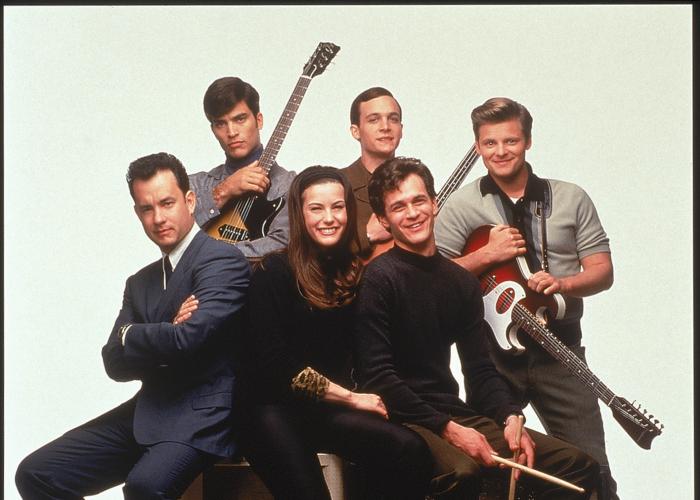Print Edition: March 5, 2014

Have you ever watched a period piece movie or TV series from an era you admire? Every now and then, there’s that one actress who, full of grace and poise, steals the eyes of the audience — AKA, me — with her classy look.
Well, this season I’ve found myself admiring the simple but ever-so-chic attire of “Faye”, a character played by Liv Tyler in one of my favorite films, That Thing You Do. The film is set in 1964, but Faye’s outfit would translate to modern times perfectly: skinny black cropped slacks, a hunter-green wool sweater, a simple bangle clasped around one slender wrist, and soft curls folding over her shoulders. To finish it off, she stares into the camera with doe eyes and a smile of pale coral. So simple. So elegant. Oh Faye! I want to be just like you!
But what makes this look so enticing? Why is it so pleasing to the eye? The answer is this: her casual sweater-and-slacks look captures the elegance of the female form without bringing a dress into the equation. It enhances some of the most feminine areas of a woman’s body while still being modest.
First, let’s look at Faye’s hunter-green sweater. Now, when I say sweater, I do not mean hoodie, cardigan, or throw-over. A “sweater” in the ‘60s meant a form-fitting, long-sleeved, crew-necked top in a thicker fabric like angora or light wool. What makes this piece so timeless is the quality of the material and the cropped sleeve, which hits just above the wrist bone. This elongates the arm and gives it a slender appearance. Also, it accentuates the wrist bone — a very attractive part of the arm.
Next, we have Faye’s skinny cropped slacks. Don’t get scared off by the word “slacks.” I usually envision wide polyester dress pants with the crease down the middle of each leg when I hear this word, but in the ‘60s this was merely a term for what we call “pants” today. Now, the most important aspect of these pants is their ankle-length cut, sometimes referred to as “flood pants.” Think of your modern skinny jeans or pants, but with a small crop or cuff at the ankle bone — again, a very flattering bone. Hey, there was a reason why covering your ankles was a requirement for modesty among women in the Renaissance era. Who knew the ankles could be so enticing?
Faye’s bangle is another essential part of her outfit. It really doesn’t take much when it comes to accessories — less is best and gold is better! Generally, the matching trio of earrings, necklace, and bracelet is too much; you can end up with a potpourri of accessories that not only clash with each other, but can distract the eye from the rest of your outfit. And if you want your accessory to pop on its own, choose a metal that corresponds with the shade of your outfit. If you already have a solid colour on your shoes, top, or lips, stay away from anything too colourful.
Faye’s elegant hair and face add the finishing touches to her perfect ‘60s outfit. Recently, I’ve been experimenting with aspects of her look like the high ponytail, long swooping bangs, and “bump-it” puff at the crown of the head.
The ponytail is easy: just tie it up, add a few curls or waves with your curling iron, and finish it off with a spritz of hair spray. The swooping bang obviously requires an overgrown side-bang. If it can fit behind your ear, it’s the perfect length — just don’t keep it there! The bump-it puff requires lots of backcombing and hairspray to keep it in place, but gives you great volume.
Finally, colouring your lips is the cherry on top. Whether coral, pink, ruby red, or dark plum, a splash of lipstick will make your smile pop! Just dial down the eye makeup if you’re going to be showing off your lips, and be sure your lip colour doesn’t clash with the rest of your outfit.

